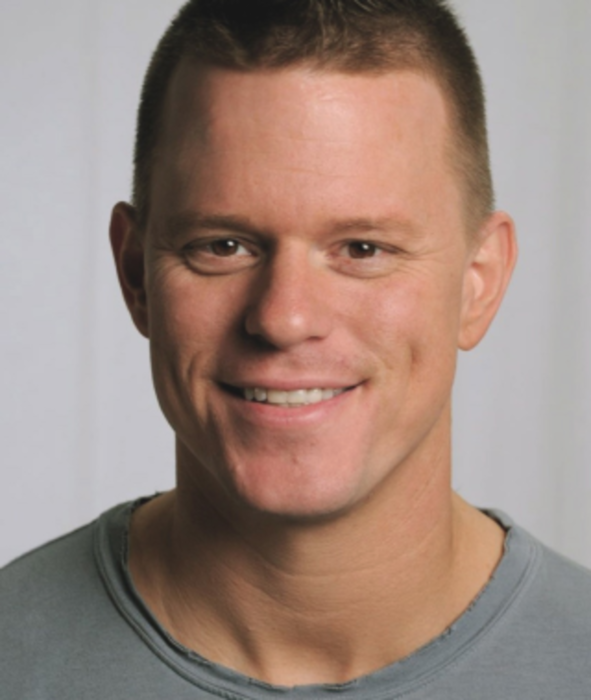Ever since taking a commercial arts class as a junior in high school, Robert Rasmussen, this year’s winner of Caples‘ Irving Wunderman Award, says he knew where he wanted to be.
“I can remember working on the Whole Foods logo in 1985—but as old as that makes me sound, I’m not really all that old,” jokes the Wunderman Award winner. The honor is presented annually at Direct Marketing News‘s Caples Awards and recognizes an innovative, creative leader with an exceptional body of creative work, as well as outstanding service to the direct marketing community.
From high school commercial arts to senior art director at Wieden + Kennedy, executive creative director at BBH, and chief creative officer at Tribal DDB, it’s been a wild ride and one Rasmussen says he’s thoroughly enjoyed.
Now working as a freelance creative director, Rasmussen reflects on the creative process and why direct marketing is relationship marketing.
Q: What inspires you?
A: When I started out, I was inspired most by the agency Wieden + Kennedy and its relationship with Nike as a brand. They grew together. They found their own identities together and they both became these inspirational brand powerhouses through the relationship they had.
Q: You’re active on the Board of Directors of the New York Art Directors Club and with the CRC Ad Council. Why’s it important to volunteer in the industry?
A: It’s important to be on boards, but it’s also valuable to be on juries and be involved with award shows. It’s not necessarily about patting yourself on the back when you get involved with a show. It’s about that shared community. One of the greatest experiences I’ve had is sitting on an international jury.
Q: What is one piece of work that’s stopped you in tracks recently—that literally made you say, “Whoa?”
A: What really makes me stop in my tracks today is not so much individual pieces of work as much as it’s the incredible relationships they’re built with. That’s full circle from where we began to where we are today. It used to be people were introduced to brands through campaigns, but that doesn’t work today because consumers want to know the brands and the people behind the products. Look at the iPad and iPhone. You could argue there are better products out there that are more affordable or have better technology, but they’re consistently outdone by Apple because of the confidence people have in that brand and because of how it presents itself.
Q: How would you describe the creative impulse? You get tasked with a creative brief, you sit at your desk, and…what happens next?
A: I’m a big believer in strategy and insight, and in data, and in looking completely at all aspects of a product. You get this mass information and then there comes a point when it all washes over you in a wave and you have to just let it do that and then go back to sea again. Then, with a clear head and from a blank place, let the creativity come to you. It’s not something you can force and it won’t ever be about going for the easy solution.
Q: How important is courageousness in marketing—and who’s usually responsible for it, the agency or the brand?
A: Being courageous is one of the most, if not the most, important thing for brands and agencies. You have to step out on that ledge, and you can’t do it as an agency without the client being willing to step out on that ledge, too. You see when the economy gets particularly bad, as it has been, a lot of clients pull back, but it also forces challenger brands to step up and take chances and look for those brands that are building on smart agencies that do go after clients willing to be creative in their execution.
Q: You’re a renaissance creative: copy, digital, video, art direction. Is there one area of the creative process you enjoy most?
A: Whether it’s user experience or digital strategy or direct, all those different departments have to come together and think like one connected hive mind to get great executions done. Great work happens when everything clicks and you’ve created something about which every person inside the agency, including the client, can say, ‘This couldn’t have happened without me.’ When you do go to an award show, you want 20 people on stage, not fighting for individual credit, but because the work couldn’t have happened with any one of those people missing.
Q: Irving Wunderman was a legendary copywriter. What does it take to be a bang-up copywriter?
A: The role of the modern copywriter is to protect the idea. You can’t lose sight of the idea in the execution. You can develop an app and an interaction that also works as a game used on iPhone and iPad with Instagram, Twitter, and Facebook, but if you start to leave the initial idea behind, the whole thing was for nothing. It’s the responsibility of the copywriter to be the conceptual glue that holds the execution together.
Q: Business Insider named you on its list of the 50 sexiest people in advertising. What do you have to say about that?
A: It gives all my friends a reason to laugh. One friend of mine got onto a list for having one of the most lust-worthy portfolios, which I think is a list you want to be on more.







